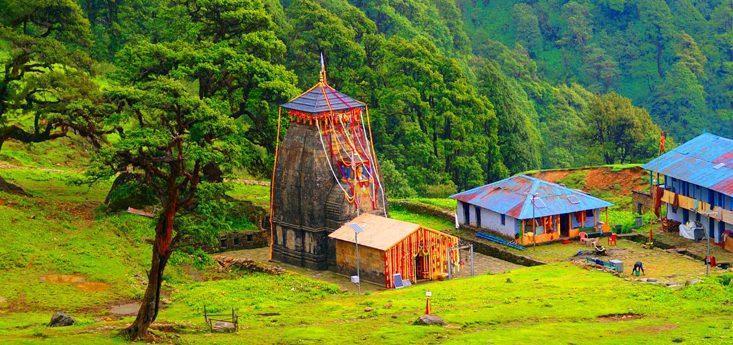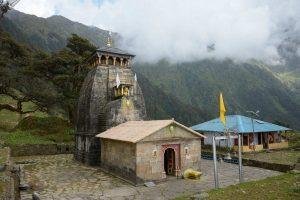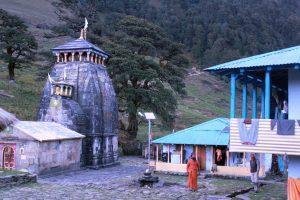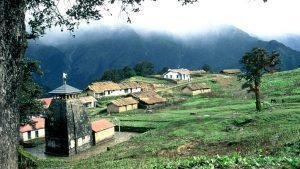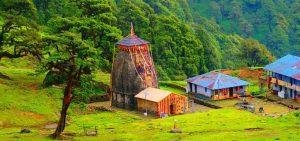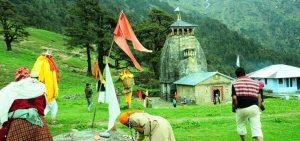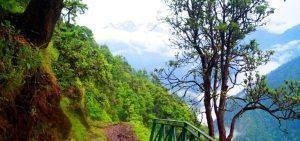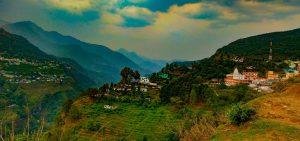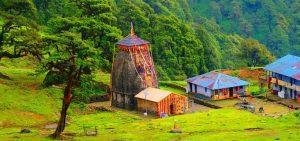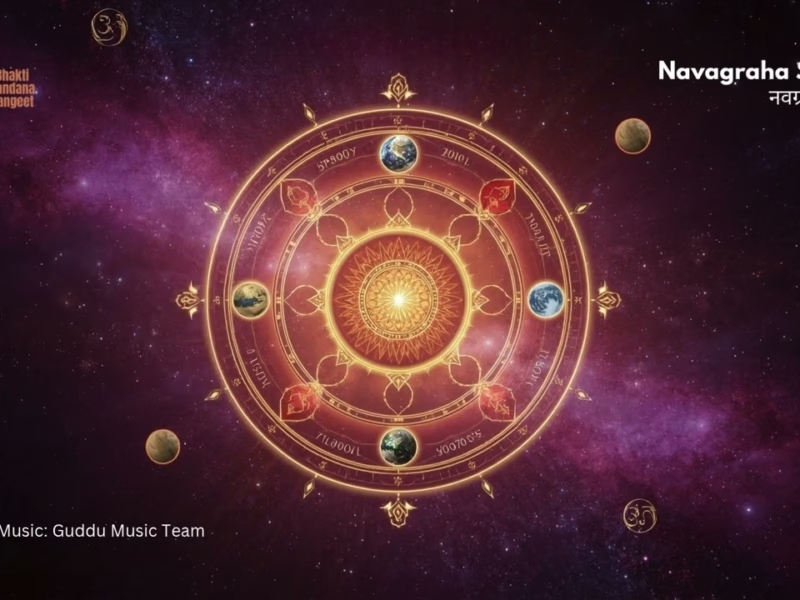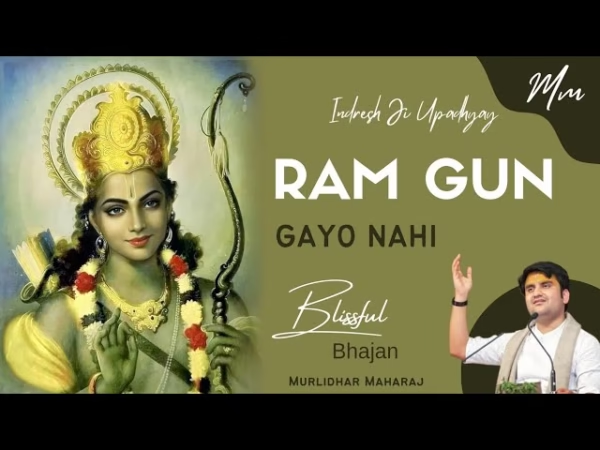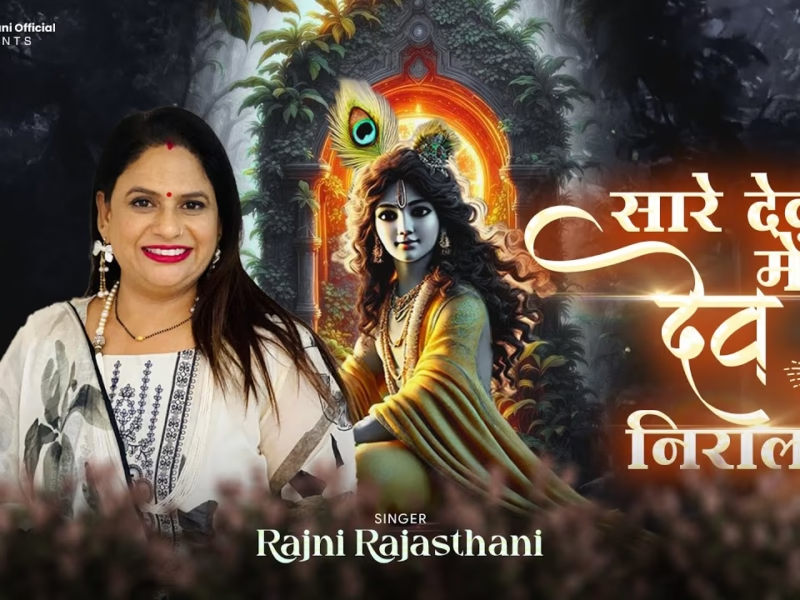Madhyamaheshwar, Garhwal, Uttarakhand
| Date built: | – |
|---|---|
| Deity: | Lord Shiva |
| Architectural style: | – |
| Major festivals | – |
| Locale: | Mansoona village, Garhwal |
| District:: | Garhwal |
| Address: | Madhyamaheshwar Temple Trek, Uttarakhand 246469 |
| Phone | 09456774499 |
Madhyamaheshwar or Madmaheshwar is a Hindu temple dedicated to god Shiva, located in the Mansoona village of Garhwal Himalayas in Uttarakhand, India. Situated at an elevation of 3,497 m (11,473.1 ft), it is the fourth temple to be visited in the Panch Kedar pilgrimage circuit, comprising five Shiva temples in the Garhwal region. The other temples in the circuit include: Kedarnath, Tungnath and Rudranath to be visited before Madmaheshwar and Kalpeshwar to be visited after Madmaheshwar. The middle (madhya) or belly part or navel (nabhi) of the bull, considered a divine form of Shiva, is worshipped at this temple, believed to be built by the Pandavas, the heroes of the Hindu epic Mahabharata.
Architecture
The temple in the north Indian style of architecture, is situated in a lush meadow, just below a high ridge. The older, so-called ‘Vriddh-Madmaheshwar’, temple is a tiny blackened shrine on the ridge, which looks straight up at the commanding Chaukhamba peaks. In the current temple, a navel-shaped Shiva-lingam, made of black stone, is enshrined in the sanctum.[1] There are two other smaller shrines, one for Shiva’s consort Parvati and the other dedicated to the Ardhanarishwara, a half-Shiva half-Parvati image. Bhima, the second Pandava brother is believed to have built this temple and worshipped Shiva here. To the right of the main temple there is a small temple where the image of Saraswati, the Hindu goddess of learning, made of marble is installed in the sanctum.
In Mansuna village, it is a popular Lord Shiva’s temple in the Garhwal region of the state Uttarakhand. This popular Hindu temple in Uttarakhand is a prominent part of ‘Panch Kedar’ pilgrimage circuit, on which it comes on the fourth. Comfortably seated at a high elevation of 3497 m, the Madhyamaheshwar Temple is said to be built by the heroes of the epic Mahabharata, Pandavas.
Since this Shiva temple is located at a countryside property bent towards the conservation of nature in order to give you the most surreal picturesque, its trail takes you on a short bumpy ride of escapades and adventure for that indelible holiday experience. In order to reach Madhyamaheshwar, one has to undergo a 21 km long moderate trek. The base point of this Panch Kedar Yatra is Uniyana. Moreover, the temple complex is considered as one of the busiest spots of Lord Shiva’s devotees. Though the structure of the temple is not gigantic, yet it is enough to disseminate an eccentric feeling amongst those who gather there. Tiny puddles which embrace the surrounding of the temple impute the calmness and sacredness to a great extent and making it one of the best places to visit in Uttarakhand for peace and spiritualism.
Legend / Local stories
The legend of Madhyamaheswar is an integral part of the legend of Panch Kedar, which is a captivating narration of the efforts of Pandavas to atone for the sins of their fratricide (gotra- hatya) act of killing their cousins, the Kauravas, and Brāhmanahatya (killing of Brahmins – the priest class), during the epic Mahabharata war. On advice from sages and their trusted benefactor god Krishna they sought Lord Shiva to pardon them and bless them to attain salvation. Since Shiva was annoyed with them for their conduct during the Kurukshetra war, he tried to avoid them by assuming the animal form of a bull or Nandi and left for the Himalayan Garhwal region. But the determined Pandavas, after sighting Shiva in the form of the bull grazing in the hills of Guptakashi, tried to forcibly hold the bull by its tail and hind legs. But the bull disappeared into the ground to reappear later in his original self of Lord Shiva at five places; in the form of a hump at Kedarnath, in the shape of bahu (arms) at Tungnath, with his face at Rudranath, his nabhi (navel) and stomach at Madhyamaheswar and his hair (locks) called jata at Kalpeshwar. Pandavas, pleased with the revelation of Lord Shiva at five places in different forms, built temples at these five places, worshipped him and attained salvation with blessings of Shiva.
Photo Gallery
How to Reach:
Madhyamaheshwar Temple is located on a foothill, and thus, reaching there could have been a difficult task to achieve. But, the state transportation along the airway and Indian railway makes it a simple one.
If you prefer airway as your prime mean of transport then for the information, the nearest airport is Jolly Grant Airport in Dehradun which is around 196 km away from the Ukhimath. Ukhimath is the base point of Madhyamaheshwar Trek.
Whereas, the closest railhead is in Haridwar which is around 210 km from the Ukhimath. To reach Ukhimath from the railway station, you can either board a taxi or can also opt to travel in state buses.
For those want to cover their journey by road, visiting Uttarakhand is also pretty-much easy from other cities or towns through the vast network of roads and national highways. For the people travelling from other northern states or cities like Punjab, Delhi, Chandigarh, and Himachal Pradesh, NH7 and Nh334 will leads you to your destination.
Route: Haridwar – Rishikesh – Devprayag – Srinagar Garhwal- Rudraprayag – Ukhimath – Mansoona – Ransi – Gondhar – Madhyamaheshwar
Moreover, if you’re visiting the temple from the Kumaon division of Uttarakhand like Nainital, Almora, or Champawat then in that case, drive through NH109 to reach Madhyamaheshwar.
Route: Nainital – Kausani – Karnprayag – Rudraprayag – Ukhimath – Mansoona – Ransi – Gondhar – Madhyamaheshwar
Once you reach Ukhimath, you’ll have to undergo a 21 km long Panch Kedar trek which starts from Uniyana and cuts through Ransi Village (3 km) to Gaundhar (6 km) to Bantoli (1 km) and further to Khatara to Nanu and finally takes you to your pilgrimage destination in Uttarakhand – Madhyamaheshwar.
Contact Details
Official Address

